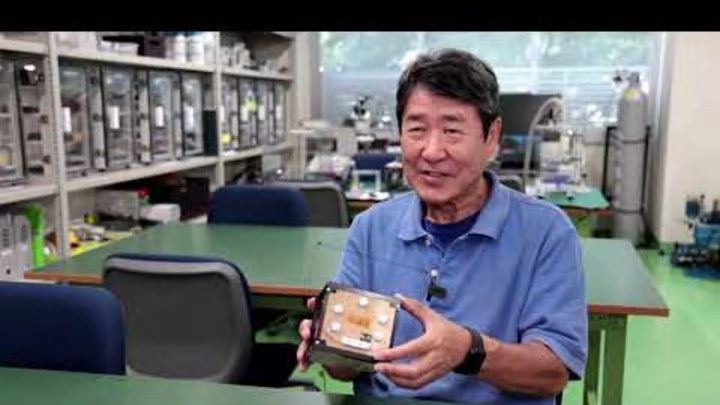Space exploration often invokes the idea of durable, cutting-edge materials that can withstand extreme environmental challenges. But scientists in Japan suspect we don’t need to abandon one of the oldest building blocks known to humanity to explore the final frontier; they’re preparing to launch a wooden satellite into orbit.
According to The New York Times, the world’s first satellite model made partially from wood was placed into a SpaceX rocket and launched earlier this week en route to the International Space Station (ISS). The satellite is a cube roughly 4 inches by 4 inches, with wooden panels as well as plastic parts. If all goes well, the satellite will be placed into orbit by the end of the year, roughly 250 miles above Earth.
Why wood? Kyoto University professor Koji Murata, who specializes in biomaterials science, has long been intrigued by the concept of sustainability in space and whether trees might one day be grown outside of Earth as a renewable resource. Wood would also produce fewer byproducts while burning up upon reentry than metal. That led to questions about what type of wood could withstand the rigors of space exploration and travel.
Takao Doi, a former NASA astronaut and Kyoto University colleague, began pursuing the idea with a lumber company, Sumitomo Forestry. Samples of magnolia, cherry, and birch trees were sent to the ISS in 2022 to analyze their durability in the face of space hazards like cosmic rays and temperature shifts. All worked well, but magnolia (or honoki) was chosen for the satellite material due to its crack-resistant properties. It’s the same type of wood used to craft the sheaths of samurai swords.
The satellite, dubbed LignoSat, should reveal how wood responds to extended space exposure. In theory, a lack of oxygen or moisture should prevent the expansion and contraction typical of wood materials on terra firma. How it performs in orbit, however, is a question that’s never been investigated. If all goes well, Doi envisions a future in which humans may be able to plant trees on the moon or on Mars.
“Early 1900s airplanes were made of wood,” Murata told Reuters. “A wooden satellite should be feasible, too.”
